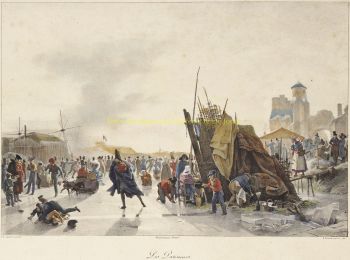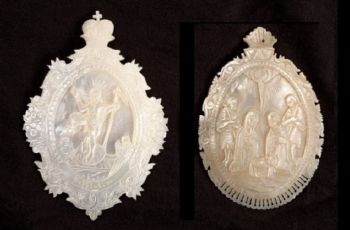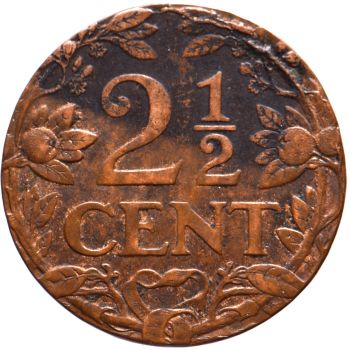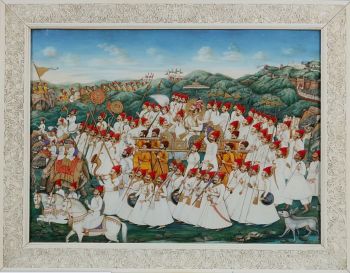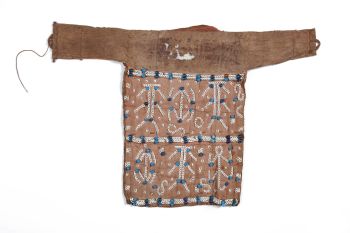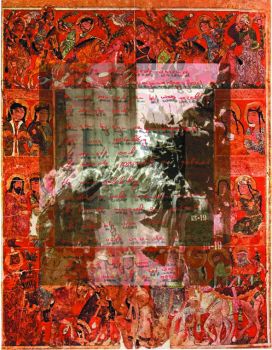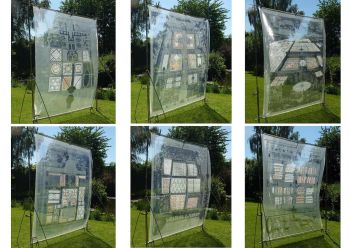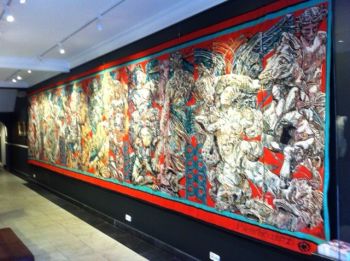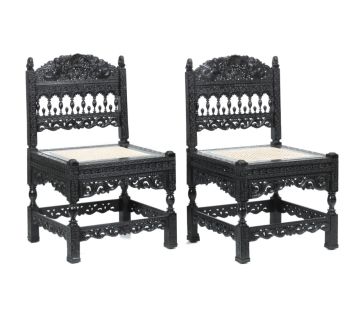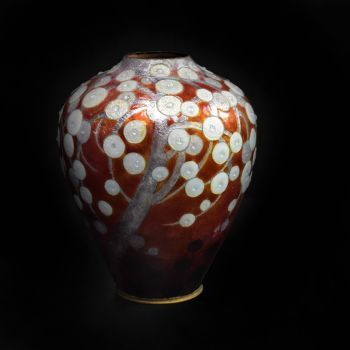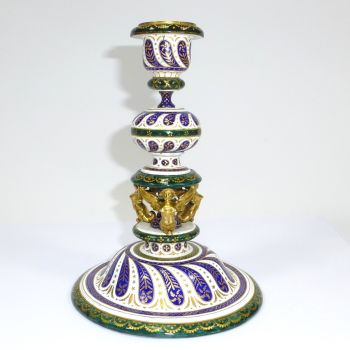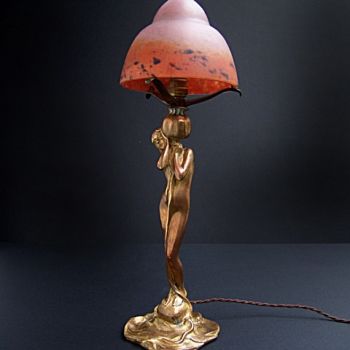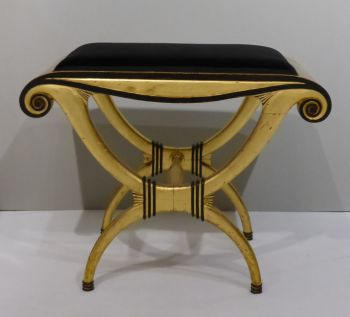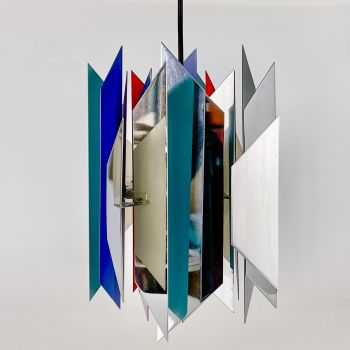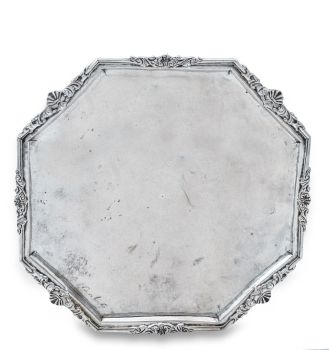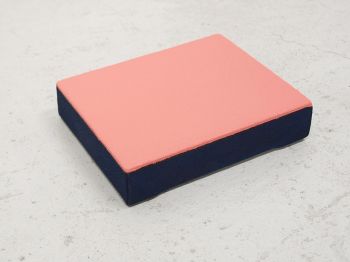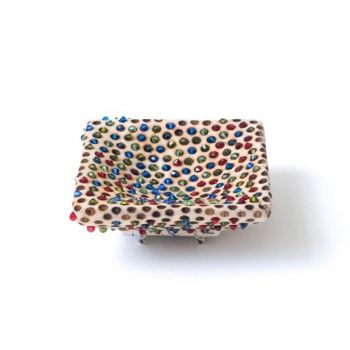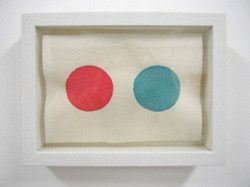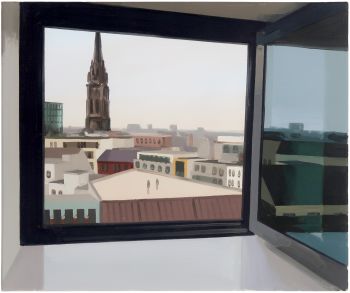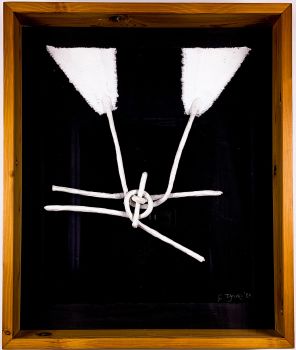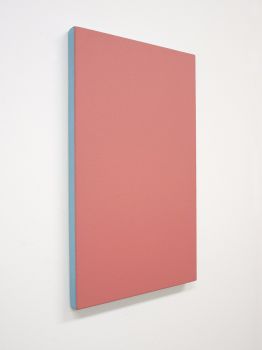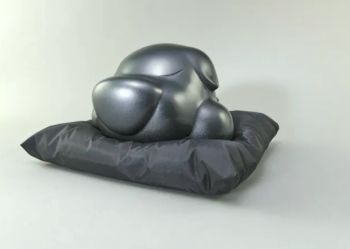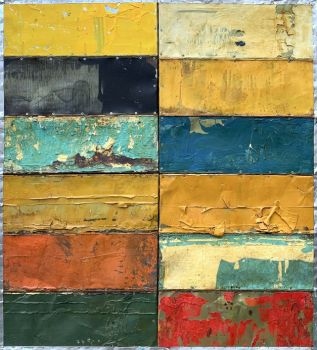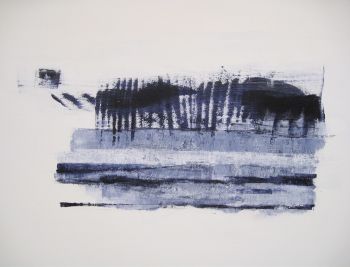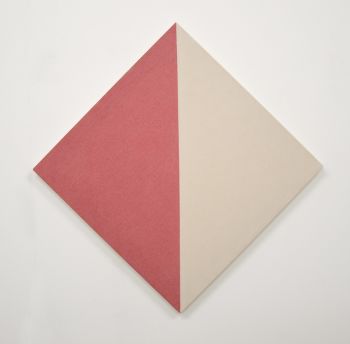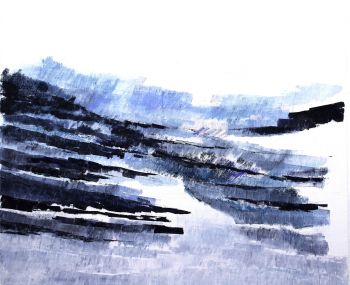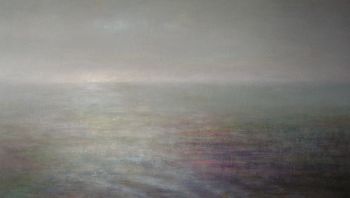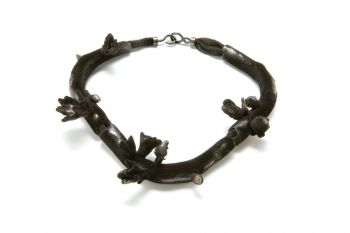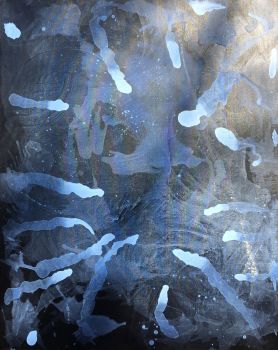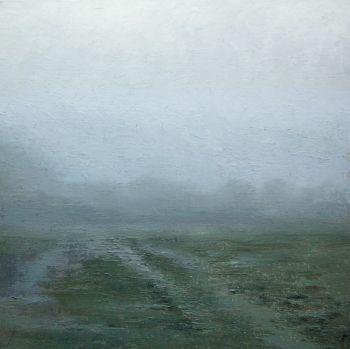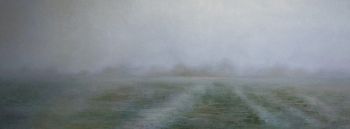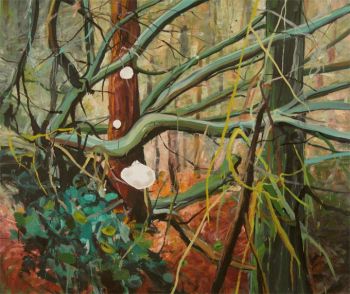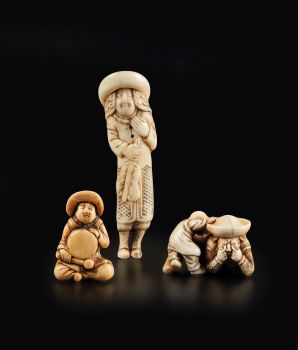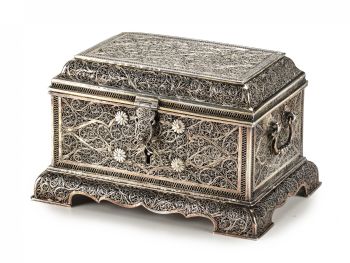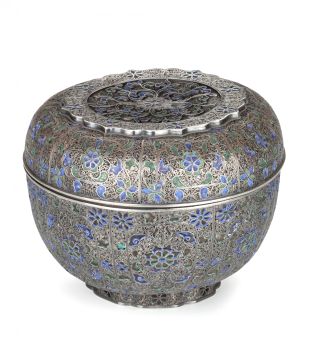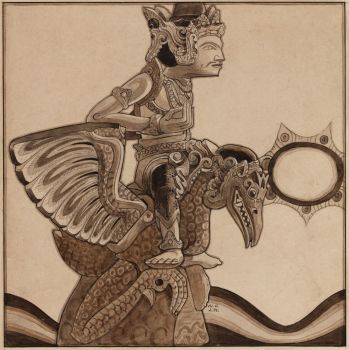A very rare Indian Armorial Palempore Chintz for the Dutch Market 1750
Unknown artist
TextileCotton
333 ⨯ 225 cm
Price on request
Zebregs & Röell - Fine Art - Antiques
- About the artworkCoromandel coast, probably Sadraspatnam (Sadras), first half 18th century
Cotton, mordant- and resist-dyed, painted, 333 x 225 cm
“Palempore” refers to large chintzes laid on a bed or hung behind it. The present very large palempore in the centre shows a coat of arms with a redish salient deer in front of a green tree on the ground, the crest with a deer issuant. The mantling shows scrolling leaves and European style scrollwork in red and green, within a circle of flowers. In the corners of the white field four vases with large flower bouquets. The borders are decorated with undulating vines with flowers and leaves issuing from large flowers and leaves in each corner and in the middle of the long sides.
The coat of arms probably belongs to Jacob Hartogh (Leiden, 30 October 1701 - Delft after 1756), a cloth manufacturer in Leiden. His father, Hendrik Hartogh, a cloth-shearer, emigrated from Bremen to Leiden at the end of the 17th century. He married Jannetje Pieters in 1701 and the couple had two sons, Jacob and Jan. Jacob, from 1740 till 1756, owned a cloth factory at the Turfmarkt in Leiden. In 1756 he sold the factory and settled in Delft. Jacob married twice, first to Katharina Paré (1697-?) in 1721, and secondly some time before 1735 to Marianne Petit (1708-?). His son from the first marriage, Michiel Hartogh, also became a cloth manufacturer in Leiden and his descendants held public posts in Delft and Rotterdam during the second half of the 18th century.
Jacob possibly ordered the palempore somewhere shortly before 1735. Jacob presumably also ordered an armorial chine de commande tea set, dated between 1730 and 1735, of which only some cups and saucers survive. The coat of arms on the tea set consists of a tree on the ground with a yellow tripping deer in front, the crest with a yellow deer issuant, and the mantling with polychrome scrolling leaves (Dr. Jochem Kroes, Chinese Armorial Porcelain for the Dutch Market, Waanders Publishers, Zwolle 2007, pg. 168).
Several other similar armorial chintzes all bear the arms of Frisian and Groninger families; Goslinga (Rijksmuseum, inv. BK-1980-795), Burmania (Rijksmuseum, inv. BK-1980-98), Alberda-Horenken-van Berum, Rengers van Welderen, and Douma van Langweer (Ebeltje Hartkamp-Jonxis, Sitsen uit India Indian Chintzes, Rijksmuseum Amsterdam 1994). Ebeltje Hartkamp-Jonxis dates these armorial chintzes to a short period between 1725 and 1730. The present palempore appears to be the only one of this design, probably ordered by a family from the province of Holland. Armorial palempores with different designs are known from Holland and Zeeland. - About the artist
It might happen that an artist or maker is unknown.
Some works are not to be determined by whom it is made or it is made by (a group of) craftsmen. Examples are statues from the Ancient Time, furniture, mirroirs, or signatures that are not clear or readible but as well some works are not signed at all.
As well you can find the following description:
•“Attributed to ….” In their opinion probably a work by the artist, at least in part
•“Studio of ….” or “Workshop of” In their opinion a work executed in the studio or workshop of the artist, possibly under his supervision
•“Circle of ….” In their opinion a work of the period of the artist showing his influence, closely associated with the artist but not necessarily his pupil
•“Style of ….” or “Follower of ….” In their opinion a work executed in the artist’s style but not necessarily by a pupil; may be contemporary or nearly contemporary
•“Manner of ….” In their opinion a work in the style of the artist but of a later date
•“After ….” In their opinion a copy (of any date) of a work of the artist
•“Signed…”, “Dated….” or “Inscribed” In their opinion the work has been signed/dated/inscribed by the artist. The addition of a question mark indicates an element of doubt
•"With signature ….”, “With date ….”, “With inscription….” or “Bears signature/date/inscription” in their opinion the signature/ date/ inscription has been added by someone other than the artist
Are you interested in buying this artwork?
Artwork details
Related artworks
Unknown artist
A JAPANESE MODEL OF A NORIMONO, A PALANQUIN1650 - 1700
Price on requestZebregs & Röell - Fine Art - Antiques
Unknown artist
The Stamford Raffles Secretaires.1800 - 1813
Price on requestZebregs & Röell - Fine Art - Antiques
1 - 4 / 12Unknown artist
A Surinam-themed Amsterdam long-case clock1746 - 1756
Price on requestZebregs & Röell - Fine Art - Antiques
 Curated by
Curated byGallerease Magazine
Unknown artist
A Dutch colonial Indonesian betel box with gold mounts1750 - 1800
Price on requestZebregs & Röell - Fine Art - Antiques
Unknown artist
IMPORTANT AND RARE LARGE INDIAN 'COMPANY STYLE' PAINTING ON IVORY DEPICTING A PARADE1850 - 1900
Price on requestZebregs & Röell - Fine Art - Antiques
 Curated by
Curated byDanny Bree
1 - 4 / 24Unknown artist
Japanese transition-style lacquer coffer 1640 - 1650
Price on requestZebregs & Röell - Fine Art - Antiques
Unknown artist
A SMALL IVORY NETSUKE OF A DUTCHMAN WITH A DRUM1750 - 1800
Price on requestZebregs & Röell - Fine Art - Antiques
Unknown artist
A JAPANESE MODEL OF A NORIMONO, A PALANQUIN1650 - 1700
Price on requestZebregs & Röell - Fine Art - Antiques
1 - 4 / 24Unknown artist
A IVORY NETSUKE OF A DUTCHMAN HOLDING A COCKEREL18th century
Price on requestZebregs & Röell - Fine Art - Antiques
Unknown artist
A silver spoon commemorating Juff’ Margareta van Hoorn1656 - 1694
Price on requestZebregs & Röell - Fine Art - Antiques
Unknown artist
A MARINE IVORY NETSUKE OF A DUTCHMAN HOLDING A CHINESE FAN18th century
Price on requestZebregs & Röell - Fine Art - Antiques
Unknown artist
A large Japanese Imari porcelain 'VOC Groningen' dish1800 - 1925
Price on requestZebregs & Röell - Fine Art - Antiques
Cornelis Anthonisz Theunissen
VERY RARE FIRST PRINTED MAP OF AMSTERDAM, A CITY ON THE RISE1544
€ 175.000Inter-Antiquariaat Mefferdt & De Jonge
 Curated by
Curated byDanny Bree
 Curated by
Curated byDanny Bree
Unknown artist
A JAPANESE MODEL OF A NORIMONO, A PALANQUIN1650 - 1700
Price on requestZebregs & Röell - Fine Art - Antiques
Unknown artist
A RARE COMPLETE INDIAN SADELI INLAID WORK AND WRITING BOX1800 - 1850
Price on requestZebregs & Röell - Fine Art - Antiques
1 - 4 / 24- 1 - 4 / 24
Unknown artist
Dutchmen in Miniature18th century
Price on requestZebregs & Röell - Fine Art - Antiques
Unknown artist
An Indian silver filigree casket with hinged coverearly 20th
Price on requestZebregs & Röell - Fine Art - Antiques
Unknown artist
A JURUNA TRIBE FEATHER HEADDRESS1900 - 1950
Price on requestZebregs & Röell - Fine Art - Antiques
1 - 4 / 12







